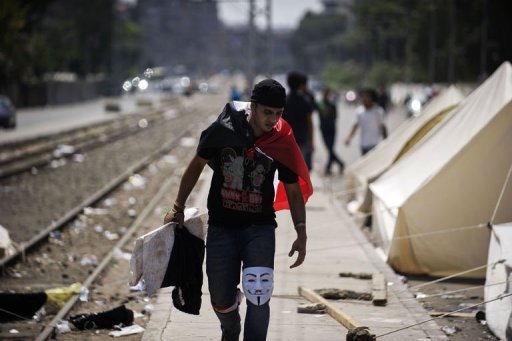SURABAYA, East Java: A lack of trust exists between the Muslim world and the West despite various attempts to bridge these two civilizations. Since the tragedy of 9/11, each side has become even more suspicious of the other. Consider the demonstrations and violence that occurred in response to the Pope s speech in September 2006, or the banning of the hijab (headscarf) in France. It seems that this kind of sensitivity will exist as long as the roots of the problem are not addressed, and the potential for disharmony will continue despite the various attempts to build bridges between the Muslim world and the West.
One root of the Muslim-Western polemic may lie in the collective subconscious. There is something that lies latent but has the power to dominate our conscious behavior. Carl Jung, the famous psychoanalyst, explained that the shadow is the deepest layer of our personality and contains personal and collective psychological qualities that we are ashamed of. These relatively autonomous elements become a part of our psychological makeup and are capable of influencing actual behavior.
This shadow, on a global level, clouds the relationship between the Muslim world and the West. Elements of the shadow are created from past events and leave scars on both sides. The Crusades, for example, occurred long ago in the Middle Ages, but they left an indelible scar in the collective subconscious of both Muslims and the West. The events of 9/11 also have the potential to leave scars. Such scars are remembered in both Muslim and Western socio-cultural institutions, persisting in the collective memory.
The persistence of these scars reinforces certain stereotypes, causing some Westerners to say, Muslims are hostile toward democracy, women, homosexuals and other religions , while some Muslims will say, The West wants only to dominate us and demonize Islam .
Perceptions such as these create barriers between individuals and groups and reduce the likelihood that one will engage with the other.
As a result, even though peace accords are signed and public statements of good will and collaboration are made, genuine contact between Muslims and those in the West must also occur. However, lasting scars create the fiction that the stranger is threatening and frightening, and as a result, some people are deceived by the shadow that lies in the collective subconscious telling them that Westerners are infidels or that Muslims spread their doctrine by the sword. These stereotypes induce fear and reduce the opportunity for harmonious relations.
Re-narration, a psychoanalytical technique for dealing with past experiences, attempts to deal with the trauma of historical scars, deconstructing those narratives that promote mistrust and prejudice.
Re-narration causes people to transform the way they see traumatic events from threatening and personal, to neutral and objective. When traumatic events are looked at through this lens, the sadness, wounds, scars and tears become superficial, neutralising the hurt.
Kingdom of Heaven , Ridley Scott s 2005 epic movie, is an example of the re-narration of stubborn scars related to Muslim-Western relations. Loosely based on the life of Balian of Ibelin, an important nobleman in the crusader kingdom of Jerusalem in the 12th century, the movie demonstrates that Christians, Muslims and Jews can live together in harmony – so long as fanaticism is kept at bay. It encourages audiences to look beyond who is wrong and who is right .
This is demonstrated by Balian s words: The wall? The Mosque? The Sepulchre? Who has claim? No one has claim. All have claim! We defend this city not to protect these stones, but the people living within these walls. The dialogue portrays the war, not as one of religious identity, but as an artistic work. Kingdom of Heaven transforms the scars, allowing the shadow to leave the subconscious, tearing down the walls that prevent honest engagement with others.
The Hijabi Monologues is another example of re-narration. The performance by two University of Chicago graduate students creates a space where Muslim American women can tell their personal stories in their own words. Through the power of re-narration, claims are challenged and generalizations confronted. Listeners gain access to shared human experiences and an enriched understanding of the lives of these women, which transcend superficial judgments based on their appearance.
Through re-narration, traumatic past experiences are more readily accepted. Individuals do not need to mourn at every memorial along their path. This willingness to accept the past does not necessarily mean completely forgetting traumatic events, instead it is an openness, an acceptance of an incident that has occurred in the past. And in this openness there is unconditional forgiveness for the other that does not demand compensation, because it is does not involve financial or physical exchange.
Re-narration can take place through many mediums: photography, art, theatre, dance, literature, sitcom, even news. Only with true storytelling, listening and understanding can the shadow that is locked in the subconscious of both Muslims and Westerners – including Muslim Westerners – be released. Only then can bridging and reconciliation attempts yield successful results.
Audifaxis a psychologist and author of The Myth of Harry Potter (2005) and Imagining Lara Croft (2006). This article is distributed by the Common Ground News Service (CGNews) and can be accessed at www.commongroundnews.org.

